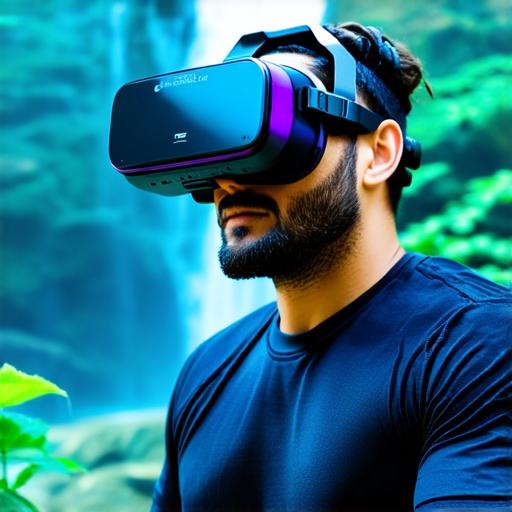
Why virtual reality is the future

In recent years, virtual reality (VR) has become increasingly popular in the entertainment and gaming industries. VR technology allows users to immerse themselves in a digital world and interact with it in ways that were previously impossible.
One of the main reasons that VR is becoming so popular is its ability to create highly immersive experiences. By wearing a VR headset, users can be transported to a virtual world where they can interact with objects and other people in a way that feels completely real.
For example, imagine being able to explore the depths of the ocean or climb Mount Everest without ever leaving your living room. With VR, these experiences are not only possible but can be highly engaging and realistic.
This technology also allows users to experience things that are physically impossible, such as flying through space or walking on walls.
Another reason that VR is becoming popular is its ability to create highly interactive and engaging experiences. VR technology allows users to interact with virtual objects in a way that feels intuitive and natural.
For example, imagine being able to explore a virtual city and interact with the people and objects there in a way that feels completely realistic. With VR, this is not only possible but can be highly engaging and interactive.
One of the most exciting aspects of VR technology is its ability to create social experiences. With VR, users can interact with other people in virtual environments in ways that feel completely natural and intuitive.
For example, imagine being able to attend a concert with your friends without ever leaving your living room. With VR, this is not only possible but can be highly engaging and immersive.
This technology also allows users to participate in activities that require physical skill, such as playing sports or driving a car together.
Another reason that VR is becoming popular is its ability to create highly personalized experiences. VR technology allows users to customize their virtual environment in ways that are tailored to their individual preferences and interests.
For example, imagine being able to design your own virtual garden or create a virtual world that is based on your favorite book or movie. With VR, this is not only possible but can be highly engaging and personalized.
This technology also allows users to participate in activities that are tailored to their individual interests, such as painting or playing music.
Despite the many benefits of VR technology, there are still some challenges that need to be addressed before it becomes widely adopted. One of the biggest challenges is the high cost of the technology itself.
VR headsets and other equipment can be quite expensive, which may limit their accessibility to some people.
Another challenge is the limited amount of content available for VR. While there are many exciting applications for this technology, there is still a long way to go before it becomes as commonplace as traditional video games or movies.
This means that developers will need to create more content and make it more accessible in order for VR to become widely adopted.
Despite these challenges, the future of VR technology looks bright. Many experts predict that VR will continue to evolve and become even more immersive and interactive in the coming years.
This means that we can expect to see even more exciting applications for this technology, including in the entertainment and gaming industries.
In conclusion, virtual reality is the future of entertainment and gaming. It allows users to experience things that were previously impossible, interact with virtual objects in a way that feels intuitive and natural, create social experiences, and be highly personalized. While there are still some challenges that need to be addressed before VR becomes widely adopted, the technology is rapidly evolving and will continue to do so in the coming years.


